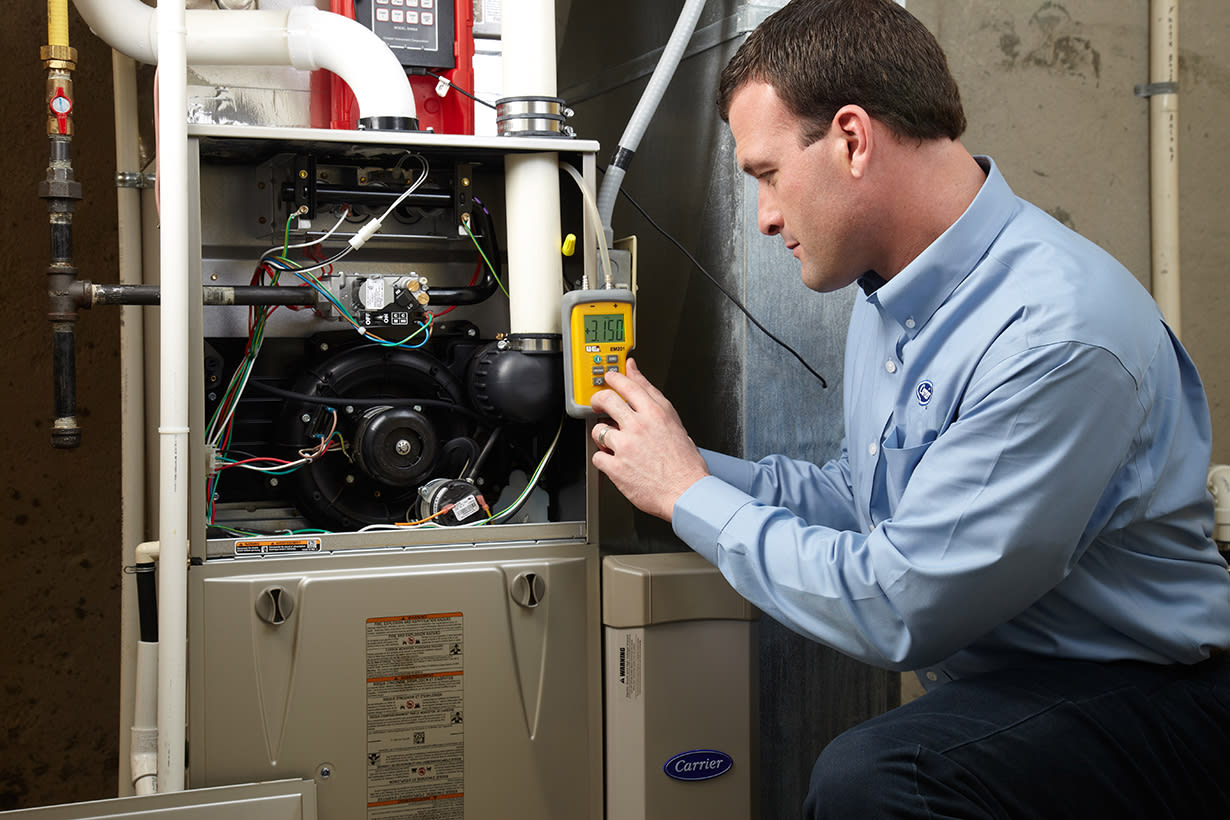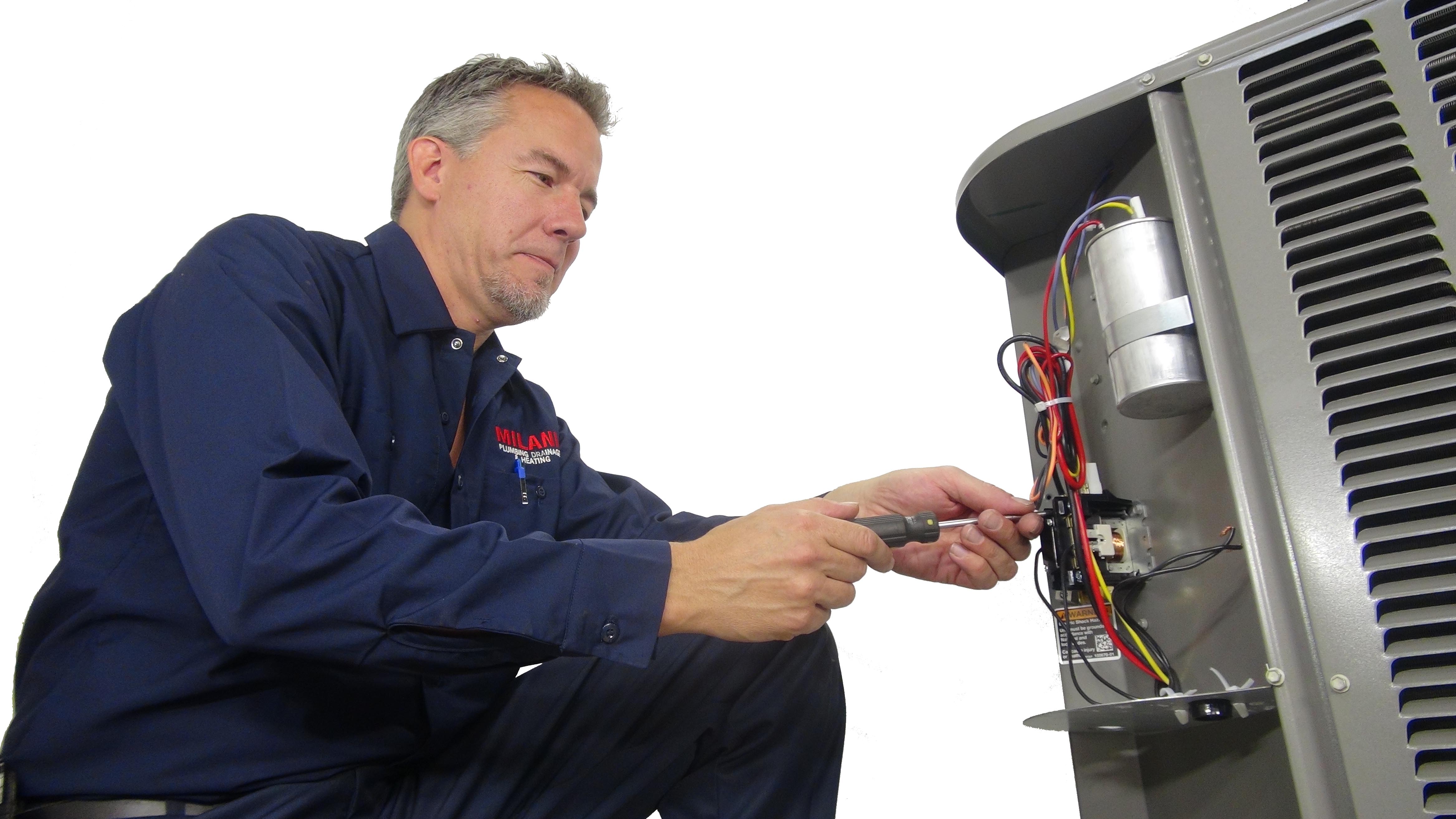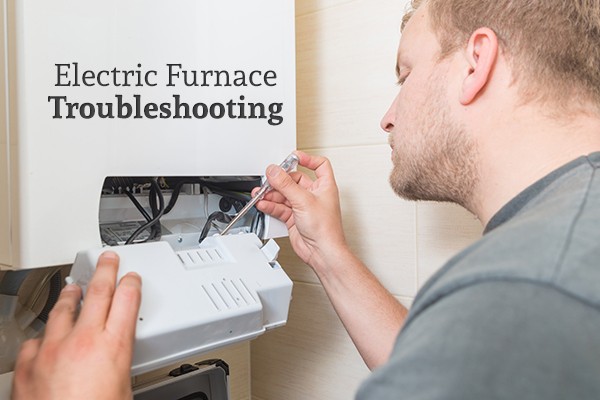Furnace Troubleshooting

A furnace is a crucial appliance for maintaining a comfortable indoor temperature during cold seasons. When it malfunctions, it can lead to discomfort and even safety concerns. This guide provides a comprehensive overview of common furnace problems, troubleshooting steps, and when it's best to call a professional.
Understanding Your Furnace
Before troubleshooting, it's essential to understand the basic components and operation of your furnace. Most furnaces operate on a relatively simple principle:
- Thermostat: This is the control center, telling the furnace when to turn on and off based on your desired temperature.
- Ignition System: This starts the combustion process. Older furnaces use a pilot light, while newer models use electronic ignition (hot surface igniter or spark igniter).
- Burners: These mix fuel (natural gas, propane, or oil) with air and ignite it, creating heat.
- Heat Exchanger: This is a metal chamber that heats up from the burning fuel. The combustion gases are safely contained within the heat exchanger and vented outside.
- Blower Fan: This circulates air across the heat exchanger, warming the air. The warmed air is then pushed through your ductwork and into your home.
- Flue/Vent: This pipe carries the exhaust gases from the furnace to the outside of your home.
- Safety Controls: These components, such as flame sensors and limit switches, ensure safe operation by shutting down the furnace if a problem is detected.
Common Furnace Problems and Troubleshooting Steps
1. Furnace Won't Turn On
This is a frustrating issue, but often the fix is simple. Here's a step-by-step approach:
- Check the Thermostat: Ensure it's set to "heat" mode and the temperature is set higher than the current room temperature. Make sure the batteries are working if it's a battery-powered thermostat. Try turning the thermostat up 5 degrees to see if it kicks on.
- Check the Power Supply: Verify that the furnace's power switch (usually located on or near the furnace) is turned on. Also, check your circuit breaker panel for a tripped breaker. Reset the breaker if necessary.
- Check the Gas Supply (for gas furnaces): Ensure that the gas valve near the furnace is open. Do not attempt to repair gas lines yourself; call a qualified professional. If you have propane, check the tank level.
- Check the Air Filter: A clogged air filter restricts airflow, causing the furnace to overheat and shut down. Replace the air filter with a new one. A dirty filter is the most common cause of furnace problems.
- Check the Pilot Light (for older furnaces): If your furnace has a pilot light, make sure it's lit. If it's out, follow the manufacturer's instructions to relight it. If the pilot light won't stay lit, there may be a problem with the thermocouple or gas valve.
2. Furnace Turns On, But Doesn't Produce Heat
If the furnace is running but not heating, the problem lies somewhere within the heating process:
- Check the Flame Sensor (for gas furnaces): The flame sensor detects the presence of a flame. If it doesn't detect a flame, it shuts off the gas supply as a safety precaution. A dirty flame sensor is a common culprit. It's usually a small metal rod located near the burner. You can try cleaning it with a fine-grit sandpaper or steel wool. Disconnect the power to the furnace before attempting to clean the flame sensor.
- Check the Gas Valve (for gas furnaces): The gas valve controls the flow of gas to the burners. If it's not opening properly, the furnace won't produce heat. This requires professional diagnosis and repair.
- Check the Igniter (for furnaces with electronic ignition): A faulty igniter won't ignite the gas. There are two common types: hot surface igniters and spark igniters. A hot surface igniter glows orange-hot to ignite the gas. If it's not glowing, it's likely faulty. A spark igniter creates a spark to ignite the gas. If you don't see a spark, it may be faulty. This requires professional diagnosis and repair.
- Check the Limit Switch: The limit switch prevents the furnace from overheating. If the furnace gets too hot, the limit switch shuts off the burners. A dirty air filter, blocked vents, or a faulty blower fan can cause the limit switch to trip. Replacing the air filter and ensuring vents are clear might solve the issue.
3. Furnace Cycles On and Off Frequently (Short Cycling)
Short cycling indicates that the furnace is overheating or experiencing some other problem that's causing it to shut down prematurely. This is inefficient and can damage the furnace over time.
- Check the Air Filter: Again, a dirty air filter is a common cause of short cycling.
- Check for Blocked Vents: Make sure that all supply and return vents are open and unobstructed. Blocked vents restrict airflow, causing the furnace to overheat.
- Check the Thermostat Location: Ensure the thermostat isn't located near a heat source (like a lamp or sunny window) or a draft, as this can cause it to read the temperature incorrectly.
- Check the Flame Sensor: A faulty or dirty flame sensor can also cause short cycling.
- Oversized Furnace: In some cases, the furnace may be too large for the size of your home. This causes it to heat up the space too quickly and then shut off, resulting in short cycles. This requires a professional evaluation and potentially a furnace replacement.
4. Furnace is Making Strange Noises
Unusual noises from your furnace can indicate a variety of problems:
- Banging or Popping: This can be caused by expanding and contracting ductwork, or potentially a more serious issue like a cracked heat exchanger. A cracked heat exchanger is a serious safety hazard and requires immediate attention from a qualified professional.
- Squealing: This is often a sign of a worn-out blower motor belt or a failing blower motor bearing.
- Rattling: This could be caused by loose panels, debris in the blower fan, or a loose motor mount.
- Whistling: This could be caused by restricted airflow, often due to a dirty air filter or blocked vents.
- Humming: This could indicate a problem with the blower motor capacitor or transformer.
5. Uneven Heating Throughout the House
This can be caused by a number of factors:
- Blocked Vents: Ensure that all supply vents are open and unobstructed.
- Leaky Ductwork: Leaky ductwork can cause heat loss, resulting in some rooms being colder than others. Sealing the ductwork can improve efficiency and comfort.
- Poor Insulation: Inadequate insulation in walls, ceilings, and floors can also contribute to uneven heating.
- Improperly Sized Furnace: If the furnace is too small, it may not be able to adequately heat the entire house.
- Zoning Issues: Consider installing a zoning system that allows you to control the temperature in different areas of your home independently.
6. Carbon Monoxide Detector Alarm
This is a serious safety concern. If your carbon monoxide detector goes off, evacuate your home immediately and call the fire department or a qualified HVAC technician. Do not re-enter the home until it has been deemed safe.
Possible causes of carbon monoxide leaks include a cracked heat exchanger, blocked flue, or improper furnace installation. Never ignore a carbon monoxide alarm.
When to Call a Professional
While some furnace problems can be resolved with simple troubleshooting steps, others require the expertise of a qualified HVAC technician. It's best to call a professional when:
- You are uncomfortable working with gas or electricity.
- You suspect a gas leak.
- You suspect a carbon monoxide leak.
- You are unable to diagnose the problem.
- The furnace requires complex repairs, such as replacing the gas valve, heat exchanger, or blower motor.
- You are unsure how to safely perform a repair.
Preventative Maintenance
Regular preventative maintenance can help prevent many common furnace problems and extend the life of your furnace. Here are some tips:
- Change the air filter regularly (every 1-3 months).
- Have your furnace inspected and cleaned annually by a qualified HVAC technician. This includes checking the burners, heat exchanger, and other components for wear and tear.
- Keep the area around your furnace clean and free of debris.
- Ensure that vents and registers are clear of obstructions.
By understanding the basics of furnace operation and following these troubleshooting and maintenance tips, you can keep your furnace running efficiently and safely for years to come. Remember to prioritize safety and call a professional when needed.






/repair-technician-removing-furnace-service-panel-184098744-2c3013252b2f44eb82b6a89f13562d33.jpg)



